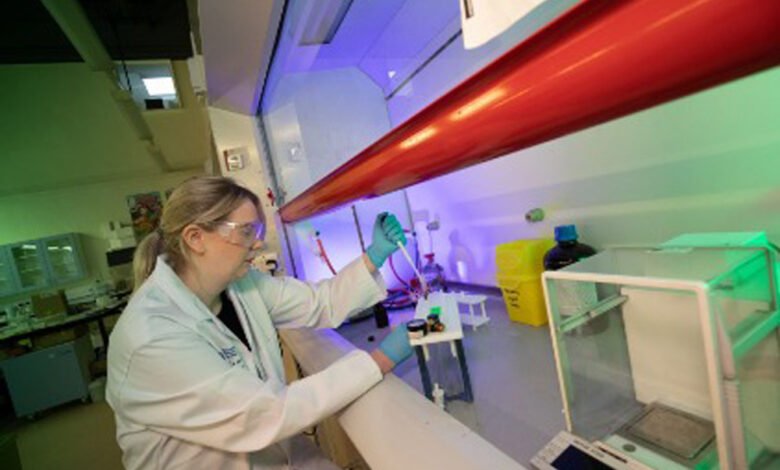
Steroids found in Scottish prisons increase by 10% in four years
A rise in steroid drugs found in Scottish prisons has been uncovered in a study led by the University of Dundee.
Researchers at the University’s Leverhulme Research Centre of Forensic Science (LRCFS), part of the School of Science and Engineering, made the discovery while working in collaboration with Scottish Prison Service (SPS).
Their findings have been reported in a new publication, Changing trends in anabolic-androgenic steroid use within Scottish prisons, published by Wiley.
The researchers analysed 3,896 suspected drug samples, all of which had been seized at Scottish prisons between January 2019 and August 2023.
Of the samples which were analysed in 2019 less than 1% were found to contain anabolic-androgenic steroids (AAS), compared to more than 10% in 2023.
Various types of AAS were found and they were the third most common drug detected in Scottish prisons in 2023.
Most of these steroid drugs (77%) were in tablet form, of various vivid colours.
AAS compounds were also found in powders, herbal material, a fragmented soap bar-type sample, and within vapes. In many cases ASS was found along with other illicit substances.
Dr Lorna Nisbet, senior lecturer at LRCFS who was involved in the study, said, “The research shows a significant rise in steroid compounds within prisons, and they are being detected in forms we would not typically expect such as herbal material and vapes.
“Lots of these materials contain a combination of different drugs, in varying amounts, making it difficult for individuals to know exactly what they are taking or at what dosage.
“By consuming these drugs, individuals may be unknowingly engaging in polydrug use and the effects of these drugs when taken in combination with others can be particularly problematic.”
Polydrug use – taking more than one substance at a time – was prevalent in 81% of all drug misuse fatalities in 2023, new data on drug-related deaths recently released by National Records of Scotland revealed.
“Polydrug use, can increase the toxic effects of drugs, prolong a drug’s effects on the person and increase negative side effects,” Lorna said.
“It is important that people working within prison settings know what drugs are potentially being used within the prison to allow them to provide the necessary support and address emerging risks more effectively.
“That is one of the reasons behind our collaborative work with SPS as it has allowed for the quick identification of changing drug use patterns and trends within the Scottish Prison landscape.”
Lorna added, “Steroids are not routinely tested for in the United Kingdom but this data suggests that their use may be on the rise, and that more monitoring of these drugs may be needed.”
To read the full paper, see: Changing trends in anabolic‐androgenic steroid use within Scottish prisons: Detection, prevalence, and quantitation – Norman – Drug Testing and Analysis – Wiley Online Library.






